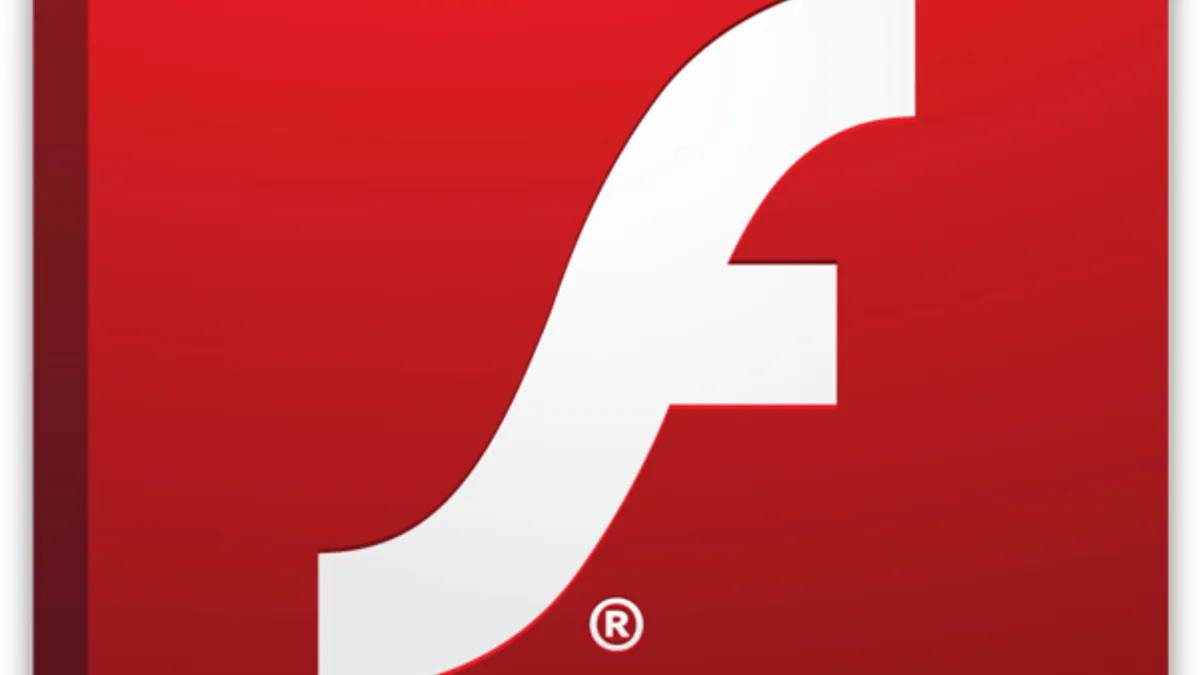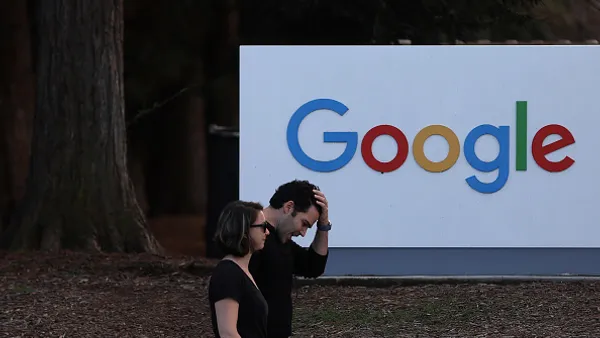Adobe Flash is in trouble.
Google has plans to automatically pause Flash content on Chrome. Mozilla shuttered Flash by default on Firefox just last week. Facebook's chief of security called on Adobe to announce a “kill date” for the browser plugin.
Marketers should also be disconcerted. Many marketers are still using Flash ads on mobile – a lot – and those ads aren’t being served in all their multimedia goodness, but instead defaulting to a static image. Research from Sizmek analyzed more than five billion Flash impressions and found an astounding 98.6% defaulted to a static image.
Wired has even jumped into the conversation with a recent article that opened with, “ADOBE FLASH—THAT INSECURE, ubiquitous resource hog everyone hates to need—is under siege, again, and hopefully for the last time.” That isn’t a love letter to a cherished technology.
Sizmek addressed the impact of “Flash bashing” in its blog, and Marketing Dive was able to get some insights into where Flash is heading from Andy Kahl, director of research at Sizmek, and Steve Lee, SVP and CTO of Tremor.
Marketers and ad networks face challenges
The recent push back against Flash from browsers and platforms impacts web developers, such as digital ad designers, Kahl explained, because Flash is a core component of the process. He said, “As Flash support dwindles, so does the inventory available to these marketers.”
Those who don't transition quickly stand to lose access to Firefox and soon Chrome inventories and audiences.
“The entire rich media advertising space was initially built on flash," Lee explained. "However, HTML5 capability that is native to browsers has long caught up to Flash. Those who have not switched over from flash rich media to HTML5 rich media ad units will have to scramble to do so.”
Lee added that ad networks will be seeing reduced inventory eligible for Flash ads, and more importantly will need to ensure the backend doesn’t return Flash ads to non-Flash enabled browsers.
Kahl agreed that ad networks face a particular challenge, saying they will need to take a closer look at what ads pass through their systems, and then advise agencies to shift from Flash to HTML5 "if they expect to see a return on their ad spend."
“There isn’t much an ad network can do to help mitigate the lack of Flash support on mobile devices and now desktop browsers – they can only make it easier for brands and agencies to adopt HTML5 through creation tools and streamlined workflow," Kahl warned. "A campaign built on incompatible ads isn’t good for anyone.”
HTML5 is the future, Flash is the past
Both Kahl and Lee agreed that as a technology, Flash has been outgrown, particularly by HTML5. Kahl explained the industry as a whole has spoken out for some time regarding their issues with Flash.
"Analysts have seen its demise as inevitable, and Adobe is have been investing in HTML5 design tools even as they continue to distribute Flash. The industry needs to comes to a consensus that HTML5 is the only standard for Flash to completely disappear, which seems to be likely," he said.
So is Flash really finished? Both Lee and Kahl think so …
"The world isn’t losing anything” by dropping Flash for HTML5, Lee argued, but added that it will cause some short term grief for anyone still depending on Flash. His conclusion? “The web is more efficient, stable, and safe without Flash.”
Kahl offered similar sentiments on the potential death knell of Flash: “The death of Flash is a very real possibility ... Its demise has been slow but the rise of HTML5 and the recent security issues are responsible for the industry considering alternatives.”
What does all this mean for marketers, ad designers and technologists? The writing is pretty much on the wall for Flash, and it looks like HTML5 is going to become the only rich media sheriff in town. What might be most telling in all these developments is even Adobe is embracing HTML5.
"Technology, like anything else, is susceptible to changes in the market and it has to adapt in order to remain relevant," Kahl said.














